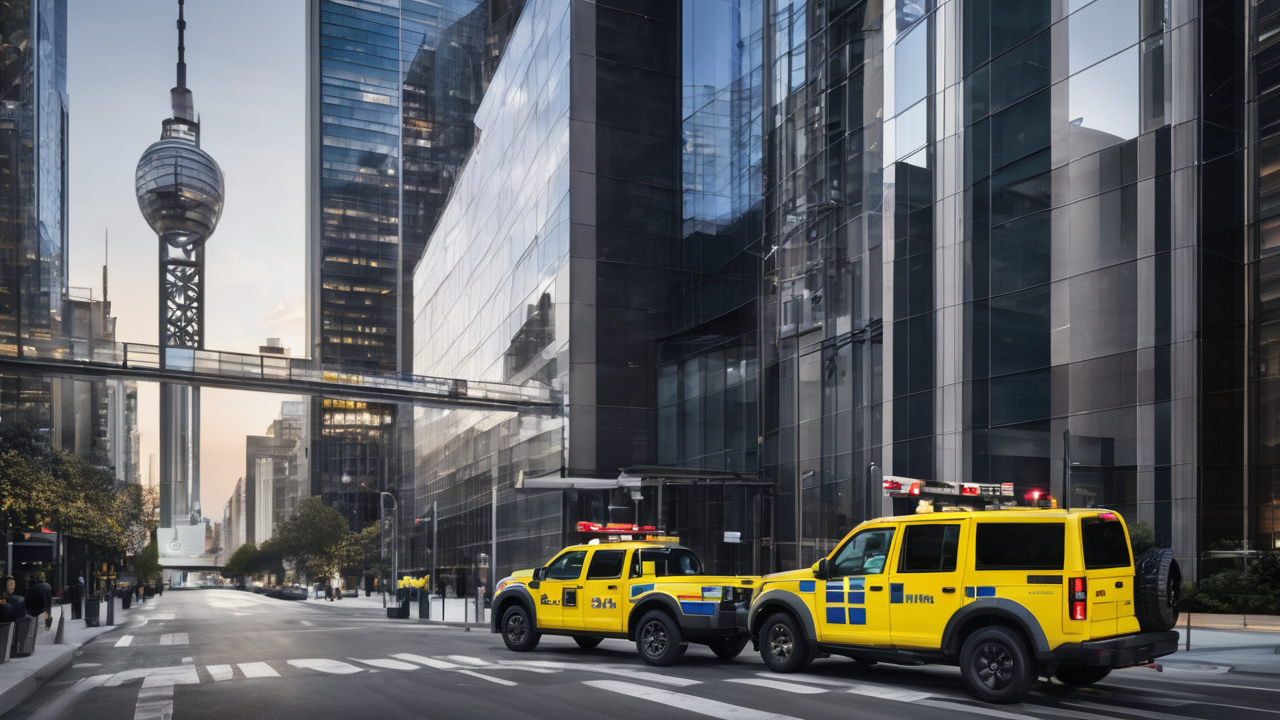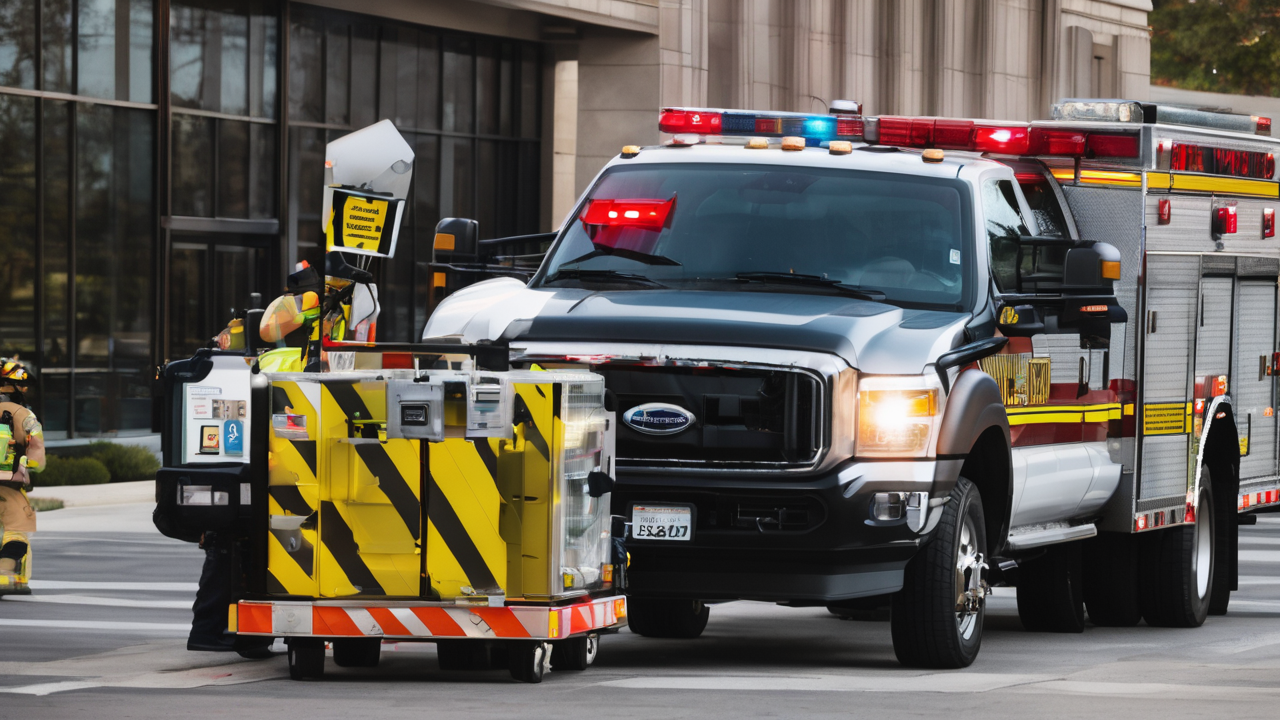Understanding the Demand for Nationwide Walkie Talkie Systems
The Role of Walkie Talkies in Modern Communication
Walkie talkies have long been a staple in various industries. They offer quick, direct communication in diverse settings. Today, these devices are evolving to meet nationwide needs. They're no longer just for short-range use. Modern walkie talkies can cover vast areas, connecting people across the country.

The demand for nationwide systems is growing. This is due to the need for reliable, instant communication. Many sectors require coordinated efforts across large distances. Walkie talkies fill this gap effectively. They provide clear, immediate voice contact without relying on cell networks.
Nationwide integration offers many benefits. It allows for seamless communication across state lines. This is crucial for large-scale operations and emergency responses. The technology also supports group calls and broadcasts. These features are vital for coordinating teams spread across the country.
Key Industries Benefiting from Nationwide Integration
Several industries stand to gain from nationwide walkie talkie systems:
- Emergency Services: First responders need reliable communication during crises.
- Transportation: Trucking companies can coordinate fleets across long routes.
- Hospitality: Large hotel chains can improve staff communication across properties.
- Retail: National chains can enhance operations and security coordination.
- Construction: Multi-site projects can benefit from improved team communication.
- Event Management: Organizers of large-scale events can coordinate more effectively.
These sectors often operate across state lines. Nationwide systems allow for uninterrupted communication. This leads to better efficiency and safety. It also enables quicker response times in critical situations.
The logistics industry, in particular, sees great potential. Long-haul truckers can stay in touch with dispatch centers. This improves route planning and emergency response. Retail giants can coordinate inventory movement across the country. This enhances supply chain management.
Assessing User Preferences and Coverage Needs
Understanding user needs is crucial for nationwide walkie talkie integration. Different industries have varying requirements. Some need long-range communication, while others focus on clarity. Battery life and durability are also key factors.
Coverage needs vary widely across the US. Urban areas require systems that can penetrate buildings. Rural regions need devices with extended range. Mountainous terrains pose unique challenges for signal transmission.
User preferences often include:
- Easy-to-use interfaces
- Long battery life
- Durability in harsh conditions
- Clear audio quality
- GPS tracking capabilities
- Integration with other communication systems
Assessing these needs helps in designing effective nationwide systems. It ensures that the technology meets real-world demands. This approach leads to better adoption rates and user satisfaction.
Coverage mapping is a critical step. It involves analyzing signal strength across different regions. This data helps in planning network infrastructure. It ensures seamless communication even in remote areas.
Technological Advancements in Walkie Talkie Systems
The Evolution of Walkie Talkie Technology
Walkie talkie technology has come a long way since its inception. Early models were bulky and limited in range. Modern devices are compact, powerful, and feature-rich. The evolution has been driven by advances in radio technology and digital systems.

Key milestones in walkie talkie development include:
- Transition from analog to digital signals
- Introduction of trunked radio systems
- Integration of GPS and location services
- Development of noise-canceling technologies
- Incorporation of encryption for secure communication
Digital systems have greatly improved audio quality. They also allow for more efficient use of radio frequencies. This is crucial for nationwide integration, where spectrum management is key.
Trunked radio systems have revolutionized large-scale communication. They automatically allocate channels to users. This maximizes the use of available frequencies. It's particularly useful in high-traffic areas.
Interoperability and Connectivity in Diverse Environments
Interoperability is a cornerstone of nationwide walkie talkie systems. It allows devices from different manufacturers to communicate. This is crucial for large-scale integration across various sectors.
Key aspects of interoperability include:
- Standardized communication protocols
- Compatibility with existing radio systems
- Ability to connect with other communication networks
- Seamless roaming between different coverage areas
Connectivity in diverse environments poses unique challenges. Urban areas face signal interference from buildings. Rural areas struggle with long-distance transmission. Nationwide systems must address these varied needs.
Solutions include:
- Use of repeaters to extend signal range
- Implementation of mesh networks for improved coverage
- Integration with satellite systems for remote areas
- Adaptive power output to optimize battery life and range
These advancements ensure reliable communication across the country. They enable users to stay connected in varied terrains and conditions.
Advanced Features and User Experience Enhancements
Modern walkie talkie systems offer a range of advanced features. These enhance user experience and functionality. They make nationwide communication more efficient and user-friendly.
Key features include:
- Voice activation for hands-free operation
- Text messaging capabilities
- Emergency alert systems
- Integration with smartphones and computers
- Cloud-based management and monitoring
- Real-time location tracking
Voice activation allows users to communicate without pressing buttons. This is crucial in situations where hands-free operation is necessary. Text messaging provides an alternative when voice communication isn't ideal.
Emergency alert systems are vital for safety. They allow users to quickly signal for help. This feature is especially important in industries like mining or construction.
Integration with other devices expands functionality. Users can connect walkie talkies to smartphones or computers. This allows for seamless communication across different platforms.
Cloud-based management simplifies system administration. It allows for remote updates and monitoring. This is crucial for maintaining large-scale networks.
Real-time location tracking enhances safety and coordination. It's particularly useful in emergency services and logistics. Managers can quickly locate team members and assets.
Implementation and Regulatory Considerations
Legal Framework Governing Nationwide Walkie Talkie Operations
Implementing a nationwide walkie talkie system involves complex legal considerations. The Federal Communications Commission (FCC) regulates radio usage in the US. Compliance with FCC rules is crucial for any large-scale walkie talkie network.

Key regulatory aspects include:
- Frequency allocation and licensing
- Power output restrictions
- Interference prevention measures
- Privacy and security regulations
- Emergency communication protocols
Frequency allocation is a critical issue. Nationwide systems must operate on approved frequencies. This often requires obtaining licenses from the FCC. The process can be complex and time-consuming.
Power output is regulated to prevent interference. Different areas may have varying restrictions. System designers must account for these differences in their implementation plans.
Privacy and security are major concerns. Encryption may be required for sensitive communications. This is especially important for government and emergency services.
Emergency communication protocols are mandated by law. Systems must be able to prioritize emergency traffic. They should also integrate with public safety networks when necessary.
Best Practices for Integration and Deployment
Successful nationwide walkie talkie integration requires careful planning. Best practices ensure smooth deployment and operation. They help overcome challenges associated with large-scale systems.
Key best practices include:
- Phased rollout to manage complexity
- Comprehensive training programs for users
- Regular system testing and maintenance
- Robust backup and redundancy measures
- Scalable infrastructure design
- Continuous monitoring and optimization
A phased rollout allows for testing and refinement. It helps identify and address issues early. This approach minimizes disruptions to existing operations.
Training is crucial for effective use of the system. Users must understand both basic and advanced features. This ensures they can fully utilize the technology in various situations.
Regular testing maintains system reliability. It helps identify potential issues before they become problems. Maintenance schedules should be strictly followed to ensure optimal performance.
Backup and redundancy measures prevent communication failures. They're crucial for industries where constant contact is vital. Multiple layers of redundancy ensure uninterrupted service.
Scalable design allows for future growth. It ensures the system can adapt to changing needs. This is important as organizations expand or new technologies emerge.
Continuous monitoring helps maintain system health. It allows for quick response to issues. Optimization ensures the system remains efficient and effective over time.
Evaluating the Impact on Public Safety and Response
Nationwide walkie talkie systems can significantly impact public safety. They enhance coordination among emergency services. This leads to faster response times and better outcomes in crisis situations.
Key impacts include:
- Improved inter-agency communication
- Enhanced situational awareness
- Faster coordination during large-scale events
- Better resource allocation in emergencies
- Increased safety for first responders
Inter-agency communication is crucial during major incidents. Nationwide systems allow different services to coordinate seamlessly. This is vital when multiple agencies respond to a single event.
Enhanced situational awareness improves decision-making. Real-time information sharing helps leaders make informed choices. This is especially important in rapidly evolving situations.
Large-scale events benefit from improved coordination. Nationwide systems allow for effective management of resources. This is crucial for events like natural disasters or major public gatherings.
Better resource allocation leads to more efficient responses. Emergency services can quickly deploy personnel and equipment. This can save lives and reduce property damage.
Increased safety for first responders is a key benefit. Better communication reduces risks in dangerous situations. It allows for quicker backup and support when needed.
Evaluating these impacts is crucial for system improvement. Regular assessments help identify areas for enhancement. They ensure that nationwide walkie talkie systems continue to serve public safety effectively.


